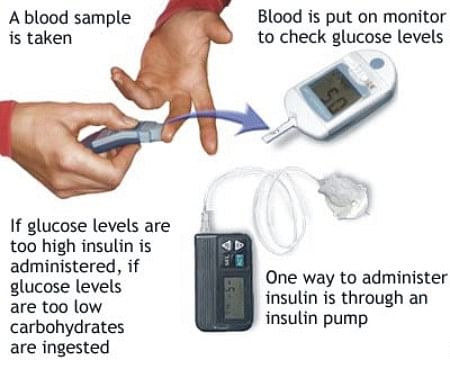How to treat low blood sugar

You have diabetes. You are feeling shaky, clumsy and irritable. These telltale symptoms may indicate low blood sugar (hypoglycemia). Find out how to get your blood sugar level back on track.
Why blood sugar falls?
Hypoglycemia — often defined as blood sugar below 70 milligrams per deciliter (mg/dL) or 4 millimoles per liter (mmol/L) — occurs when there is too much insulin and not enough sugar (glucose) in your blood.
Hypoglycemia is most common among people who take insulin, but it can also occur if you are taking oral diabetes medications. Culprits may include:
- Taking too much diabetes medication
- Not eating enough
- Postponing or skipping a meal
- Increasing physical activity without eating more
- Drinking alcohol
What to watch out for?
Paying attention to the early signs and symptoms of hypoglycemia can help you treat the condition promptly. Red flags include:- Shakiness
- Clumsiness
- Dizziness
- Weakness
- Sweating
- Hunger
- Irritability or moodiness
- Headache
- Blurry or double vision
- Pounding heartbeat
- Confusion
It is important to take your symptoms seriously. Hypoglycemia can increase the risk of serious — even deadly — accidents. Left untreated, hypoglycemia can lead to seizures and loss of consciousness. Rarely, severe hypoglycemia can be fatal.
What to do?
If you think that your blood sugar may be dipping too low, check your blood sugar level. Then eat or drink something that will raise your blood sugar level quickly. For example:- Five to six pieces of hard candy
- Four ounces (118 milliliters) fruit juice
- Five to 6 ounces (148 to 177 milliliters) regular — not diet — soda
- One tablespoon (15 milliliters) sugar or jelly
- Three glucose tablets
If you experience symptoms of low blood sugar but cannot check your blood sugar level right away, treat yourself as though you have hypoglycemia.
In fact, you might want to carry at least one sugary item with you at all times.
It is also a good idea to wear a bracelet that identifies you as someone who has diabetes.
Check your blood sugar level again 15 to 20 minutes later. If it is still too low, eat or drink something sugary. When you feel better, be sure to eat meals and snacks as usual. When you meet with your doctor, mention any episodes of hypoglycemia. He or she will consider what triggered the hypoglycemia. If necessary, your doctor may change your diabetes treatment plan to prevent future problems with low blood sugar. How to prepare your friends, family and co-workers
Hypoglycemia can leave you confused or even unconscious. In case you are not able to treat hypoglycemia yourself, make sure your family, friends and co-workers know what to do. Remind them to look for these red flags:- Confusion
- Lack of coordination
- Strange behavior
Then tell them how to treat hypoglycemia. If you are conscious and able to cooperate, they can give you a sugary food or drink or over-the-counter glucose tablets.
If you lose consciousness, you will need an injection of glucagon or emergency treatment in the hospital. Glucagon is a hormone that stimulates the release of sugar into the blood.
If you lose consciousness and a glucagon kit is not handy or no one is able to give you the shot, you will need emergency medical help.
Remember, prompt treatment of hypoglycemia can save a life.

 For all latest news, follow The Daily Star's Google News channel.
For all latest news, follow The Daily Star's Google News channel. 



Comments